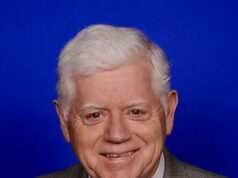Under Budget & Ahead of Schedule: Secretary Zinke Announces Full Funding to Repair Arlington Memorial Bridge
Project saves taxpayers $35 million – Shaves 18 months off construction time
WASHINGTON – (RealEstateRama) — U.S. Secretary of the Interior Ryan Zinke announced a $227 million project to rehabilitate Arlington Memorial Bridge, a historic and critical transportation link in the nation’s capital. As awarded, the project will save American taxpayers $35 million and 1.5 years of estimated construction time.

“Repairing Arlington Memorial Bridge underscores President Trump’s commitment to rebuilding American infrastructure and is a major step in addressing the National Park Service’s $11.3 billion maintenance backlog,” Secretary Zinke said. “The bridge is one of the largest transportation infrastructure projects in National Park Service history.”
Over the past six years, the National Park Service (NPS) and Federal Highway Administration (FHWA) have made emergency temporary repairs while planning the larger rehabilitation. Without a complete rehabilitation, the continued and accelerated deterioration of the bridge’s concrete deck would have required it be closed by 2021.
The NPS, with the District of Columbia as co-signer, received a $90 million FASTLANE grant from the U.S. Department of Transportation, and Senator Mark Warner (D-VA) secured an amendment to the fiscal year 2017 Appropriations Act (P.L. 115-31), which directed $30 million to the project. In order to complete the project in a single phase, the NPS will invest $107 million of its annual transportation and construction funds. A “design-build” contract – meaning the contractor will both design the work and conduct the repairs – will save money and accelerate the project’s completion time.
The Federal Highway Administration (FHWA) awarded and will manage the $192 million contract with Kiewit Infrastructure Co. of Hanover, Maryland. $35 million of the total project cost is for engineering, construction management, wetlands mitigation, and contingency, through the FHWA.
“We are happy to play a role in rehabilitating this iconic American bridge,” said Acting Federal Highway Administrator Brandye L. Hendrickson. “Using state-of-the-art tools, techniques and engineering practices, we can improve the bridge’s safety and ensure it remains an active part of the nation’s capital.”
The project has benefitted from strong support from local leaders and congressional representatives, including District of Columbia Mayor Muriel Bowser and Delegate Eleanor Holmes Norton (DC), Senators Mark Warner and Tim Kaine (VA), and Members of Congress Barbara Comstock and Don Beyer (VA).
Major construction will start in fall 2018. It will replace the drawbridge span, rehabilitate the concrete approach spans, and replace the concrete deck. Workers will employ accelerated bridge construction techniques, including using prefabricated concrete deck panels. They will reset the stone curbs and light posts and restore the historic stone and metal cladding. The structure of the existing bascule span will be replaced with variable depth steel girders, which will significantly extend the useful life of the bridge while significantly reducing maintenance costs. The NPS will begin minor repairs to the bridge by the beginning of 2018.
Regarded as Washington’s most beautiful bridge, Memorial Bridge symbolically links North and South in its alignment between the Lincoln Memorial and Arlington House, the Robert E. Lee Memorial. The adjacent Rock Creek and Potomac Parkway terminus, the Watergate steps, and monumental equestrian statuary join with the bridge to create a formal western terminus of the National Mall at the edge of the Potomac River.
Designed by the prominent architectural firm of McKim, Mead and White, the low, Neoclassical bridge is 2,163 feet long and 60 feet wide. Except for the bascule (drawbridge) span in the bridge’s center which is clad in metal, it is constructed from reinforced concrete faced with dressed North Carolina granite ashlar. When it opened in 1932, the bridge was the longest, heaviest and fastest opening drawbridge in the world; the drawbridge last opened in 1961. Today, it carries 68,000 cars per day.
Contact:















